Seochon is home to one of Seoul’s most iconic
hanok villages. Some of the traditional homes of the neighborhood have become public hotspots, offering opportunities to stay overnight and explore Korean culture.
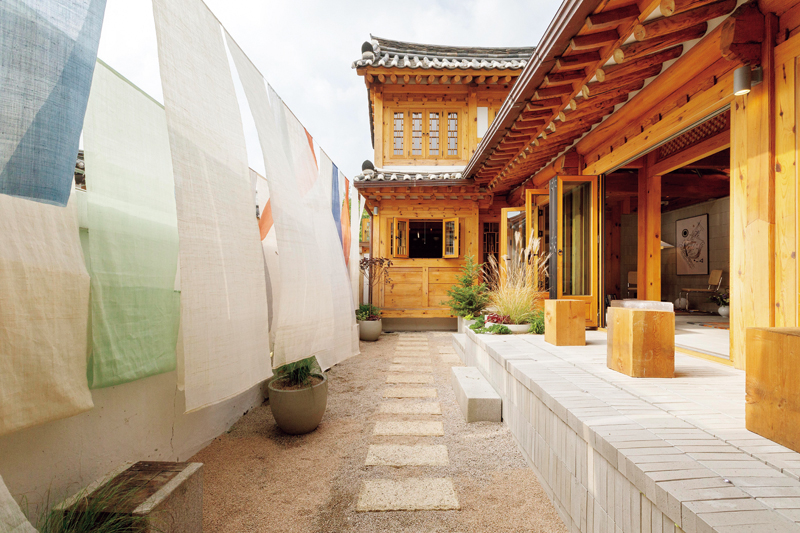
A view of the inner courtyard at Seochon Lounge, a renovated two-story hanok that is open to the public. People accustomed to modern apartment living can experience life in a traditional Korean residence.
ⓒ Seoul Metropolitan Government
As one of Seoul’s oldest neighborhoods, Seochon is home to a collection of hanok. Those dating to the Joseon Dynasty (1392–1910) were the residences of government officials, but most others are “urban hanok,” constructed during the Japanese colonial period in the 1920s and 1930s. At the time, real estate developers divided large plots of land into many small lots and mass-built houses to accommodate the soaring population of the capital, then called Gyeongseong.
Typical urban hanok have a square layout, with a front gate opening onto a central courtyard and rooms arranged around it on the sides. Though simpler in design and scale compared to their older counterparts, they feature more decorative elements and utilize modern materials such as glass and brick. They are also more up to date, being equipped with modernized kitchens and bathrooms to suit changes in lifestyle.
Now a century old, urban hanok maintain the charm and tranquility associated with traditional Korean architecture, leading to rising interest in overnight hanok stays to experience the way Korean people lived in the past. Recognizing that demand for hanok stays by Koreans and international visitors was high but the cost somewhat prohibitive, the Seoul Metropolitan Government and Jongno District Office took action. Using public funds, they acquired several hanok and made them available for general use at an affordable price.
The so-called “public hanok” located in Seochon include Sangchonjae, Hong Geon-ik House, and Seochon Lounge. In addition to tours and overnight experiences in traditional Korean living, they offer exhibitions by budding artists as well as artistic and cultural activities such as craft workshops.
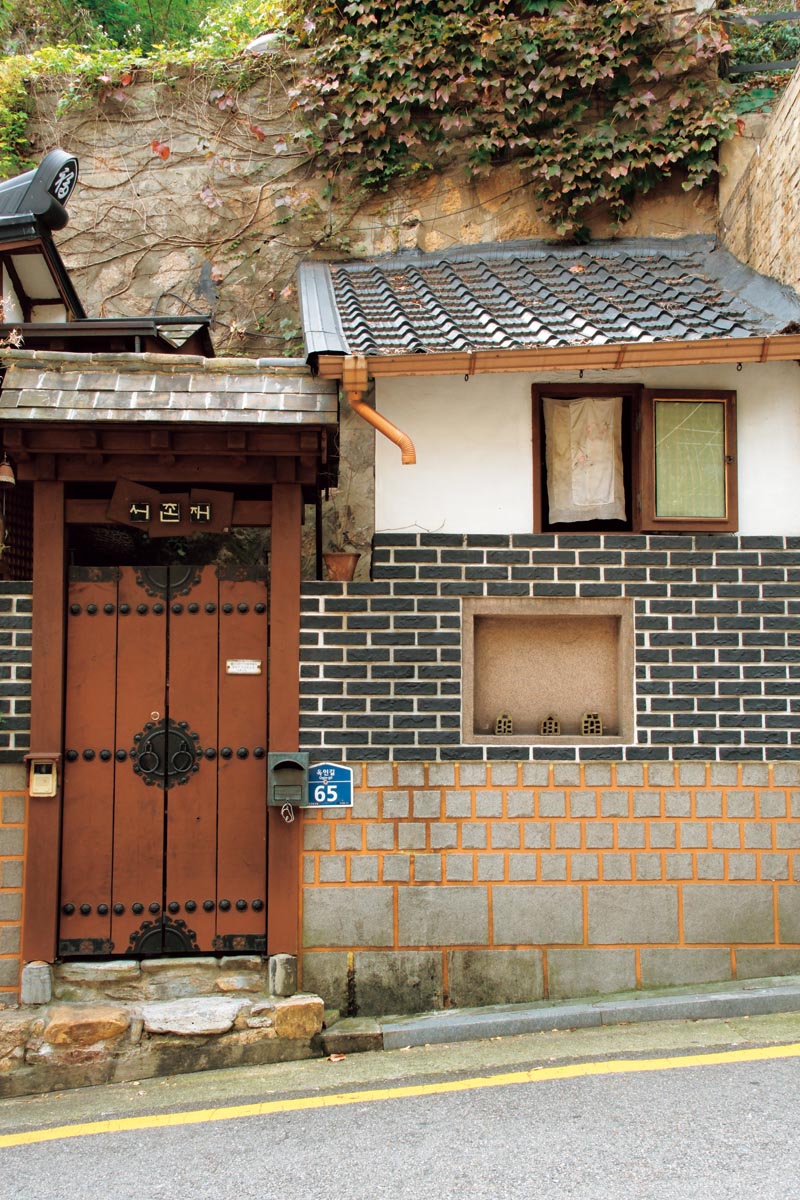
Seochon has many urban hanok built during the modernization era. Though similar to traditional hanok at first glance, they differ in form, materials, and construction methods. They are characterized by their use of modern materials such as glass, brick, tiles, and galvanized iron sheets, along with an emphasis on decorative elements.
ⓒ Choi Tae-won
CULTURAL EXHIBITION SPACE
Sangchonjae, a large hanok that was once an abandoned property owned by the police, was purchased by the Jongno District Office in 2013. After restoration, it was opened in 2017 as a cultural exhibition space.
A visit to Sangchonjae, built in the late 19th century, allows visitors to explore the features of traditional Korean housing, including ondol, an underfloor system of flues that channel heat and smoke from a furnace under the house. The inner and outer courtyards are arranged to form a cohesive layout that reflects the traditional hierarchy, connecting the women’s quarters (anchae), men’s quarters (sarangchae), and servants’ quarters (haengnangchae).
Sangchonjae’s beautiful design and composition have made it a popular destination for students and enthusiasts of hanok architecture. It received the Korea Public Architecture Award from the Ministry of Land, Infrastructure and Transport in 2017, and the Good Place Award from the Ministry of Culture, Sports and Tourism the following year.
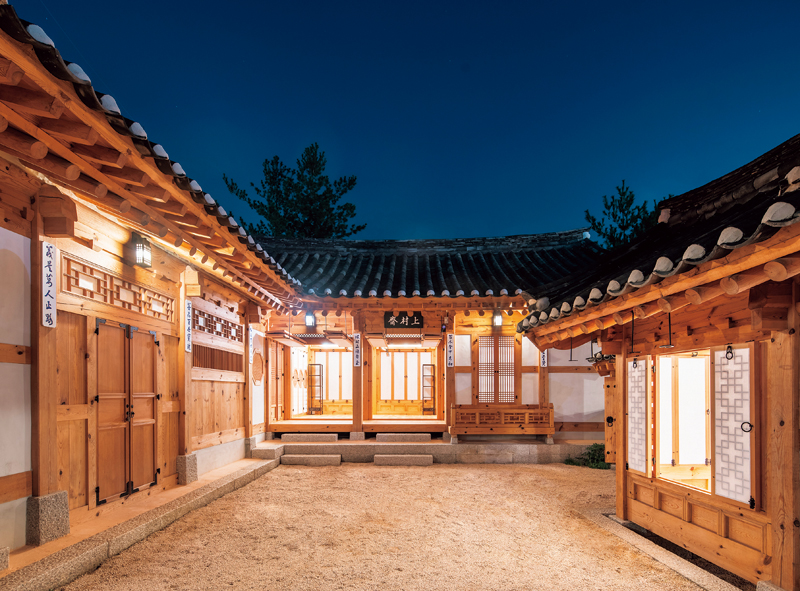
Sangchonjae was restored in the style of a late 19th-century hanok after a long period of abandonment. Praised as a beautiful revival of traditional Korean architecture, the house is one of the most famous publicly owned buildings in Seochon.
ⓒ Jongno Foundation for Arts & Culture
The charm of Sangchonjae extends to its artistic and cultural offerings. The venue operates programs related to hanok, hanbok (traditional Korean attire), traditional crafts, and seasonal customs. It offers not only one-time experiences but also courses on hanok and docent training. Additionally, it supports emerging artists by regularly showcasing their works. By providing a rich cultural experience, Sangchonjae has become a beloved destination, attracting approximately 20,000 visitors annually.
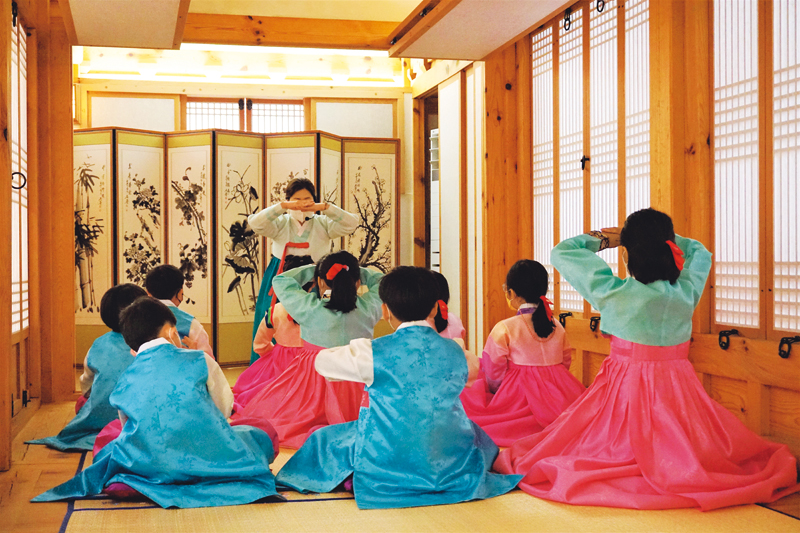
Sangchonjae, one of Seochon’s public hanok, offers programs that explore traditional Korean culture. Here, children dressed in hanbok are taught formal manners as part of a class on the traditional way of life.
ⓒ Jongno Foundation for Arts & Culture
BLENDING TRADITION AND MODERNITY
The Hong Geon-ik House, built in the 1930s, is regarded as an outstanding fusion of traditional and modern residential architecture. Hong was presumably a merchant, but detailed records of him are scarce. The house that takes his name is one of the few remaining hanok in Seoul with a well and an ice storage area. Perched on a gentle slope, it is composed of independent wings — the women’s, men’s, and servants’ quarters — built without disturbing the original topography, a hallmark of traditional Korean houses. However, modern elements such as glass doors in the wood-floored hall (daecheong) and awnings distinguish this house from purely traditional hanok. In recognition of its architectural significance, it was designated as a Seoul Metropolitan City Folk Cultural Heritage in 2013.
The city of Seoul purchased the hanok in 2011 and opened it to the public in 2017 after renovation work. As well as exploring the house, visitors can take guided tours. The most popular are walks exploring the cultural heritage sites scattered throughout Seochon, giving visitors the chance to trace the footsteps left by historical figures in this area, the backdrop for Album of Eight Scenic Sites of Jang-dong in Seoul by Joseon-era painter Jeong Seon (1676–1759).
Another attraction of the Hong Geon-ik House is its seasonal cultural events. They include traditional tea ceremonies on summer evenings and autumn workshops to make songpyeon, a type of rice cake, for the Chuseok holidays. The needlework, lacquerware, pottery, and other craft classes are particularly meaningful as they are conducted in collaboration with local artists and creators.
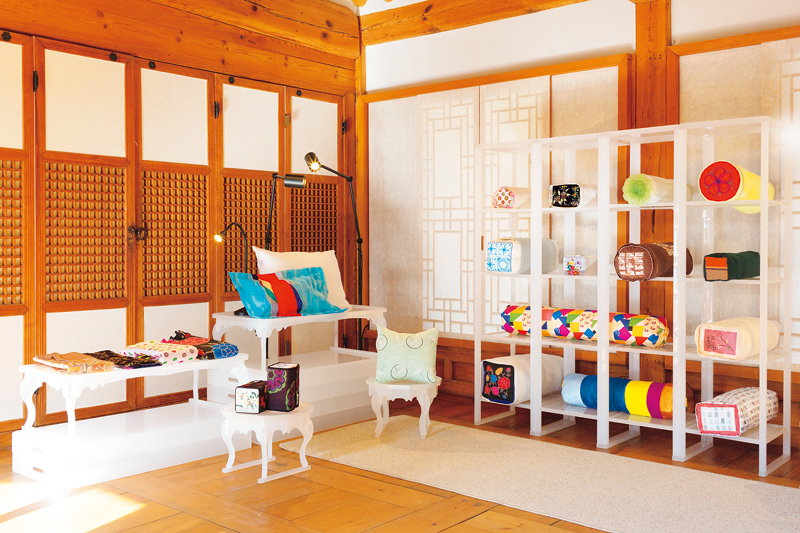
The special exhibition Objects of a Household – Conduct of Life at the Hong Geon-ik House, held from December 2022 to January 2023, showcased works bridging past and present by OUWR DESIGN HOUSE and other craftspeople.
ⓒ Hong Geon-ik House, OUWR
BRINGING THE PAST INTO THE PRESENT
Seochon Lounge opened in October 2023 as a multipurpose cultural space, established as part of Seoul’s hanok preservation initiative. The masterfully renovated interior comprises two floors: the ground level is for curated exhibitions, while the upper floor is a haven for relaxation.
The lounge functions as a cultural hub in the vibrant neighborhood, showcasing the works of talented artists, designers, and artisans of all age groups from Korea and other countries. The inaugural exhibition, Bauhaus x Korea Craft Design, perfectly encapsulated the goal and mission of the place, seamlessly merging Bauhaus-style furniture with traditional Korean craftworks. Subsequent exhibitions have continued to explore the intersection of tradition and modernity, including Seoul Highlights, a joint exhibition by industrial design students from the University of Art and Design Lausanne (ÉCAL) in Switzerland and Korean lighting brand AGO held in November this year.
Aside from exhibitions, Seochon Lounge is renowned for its Global Seasonal Tea Talks that are hosted by tea sommeliers. These sell-out sessions give participants the opportunity to discover the rich stories steeped in tea brews from Korea and around the world.
While the physical form of hanok may have evolved over time, their serenity remains unchanged — an eternal wellspring of inspiration for Korean culture and contemporary life. The diverse events offered at Seochon Lounge and its two sister spaces present yet another way to experience and enjoy the Seochon area.
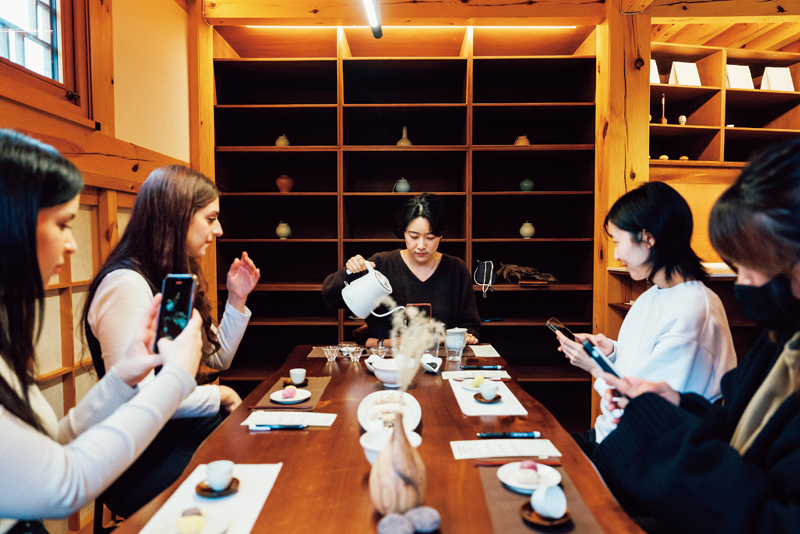
Participants enjoy tea at a Global Seasonal TeaTalk, a popular event at Seochon Lounge. Under the guidance of tea sommeliers, visitors from around the world gain a deeper understanding of tea.
ⓒ Seochon Lounge